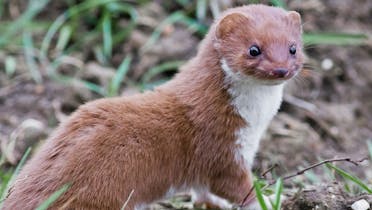
It’s cold and rainy outside. We make ourselves comfortable on the sofa and wrap ourselves in a warm blanket. The Sunday crime thriller is on the television and a cup of tea is steaming on the living room table. While the fictional detectives are chasing criminals on screen, a faint rustling sound becomes noticeable alongside their voices. Suddenly a small dark body flits across the room. A mouse! The animal has probably made itself as cosy in our home as we have. But as cute as the little animal may be, how do we get rid of it again?
Although this doesn’t initially sound like an everyday situation at Swissgrid, it is not quite as far removed from reality as you might think. Of course, employees don’t sit on sofas and no one watches television during working hours. But mice can really be found at Swissgrid, for example in the substation in Sils. The question of how to get rid of mice is therefore of concern to the national grid company.
The question of how to get rid of mice is of concern to the national grid company.
Mice and substations
The substation in Sils is an important element of the Swiss transmission grid. Switching operations can be carried out here in the event of regional overloads, and the transformers housed in the substation ensure that the current is transformed from 380 kilovolts to a lower voltage. Communication between the substation and the grid control room is fully automatic thanks to digitalisation.
On colder days, mice seek shelter in the substation’s operating buildings and, in the worst case, may start nibbling on the data cables. What is basically harmless for the mice can cause a breakdown in communications between the grid control room and the substation. Technicians then have to go out and replace the affected cables. Swissgrid substations are regularly inspected for traces of mice.
Make the enemy of your enemy your friend
Swissgrid has chosen an unusual method to address the mice problem: it is attracting their natural enemies to the area surrounding their substations. One such natural enemy is the weasel, the smallest predator in the world. To ensure that these animals feel at home in the substation in Sils, the area has been adapted to the needs of the weasels in collaboration with experts. In addition to food, weasels also need shelter and warm nests for their young. High vegetation is particularly important; strips of old grass, tall herbaceous plants, wasteland and plenty of small structures such as piles of branches and stones provide a nursery for their offspring. Cairns have therefore been built for the weasels in Sils substation. Strips of old grass have been left as a structural element to connect sections of habitat and to provide cover, and the mowing frequency has been modified accordingly. Slip tubes have been installed in the fence foundations to ensure that the weasels can get in and out of the substation.
Swissgrid has chosen an unusual method to address the mice problem: it is attracting their natural enemies to the area surrounding their substations.
The weasel was not chosen by chance. In Switzerland, these animals are on the red list of endangered species. The aim of Swissgrid’s project in Sils substation is not only to do something about its mouse problem, but also to offer the weasels a new habitat, which they need in order to perpetuate their species.





